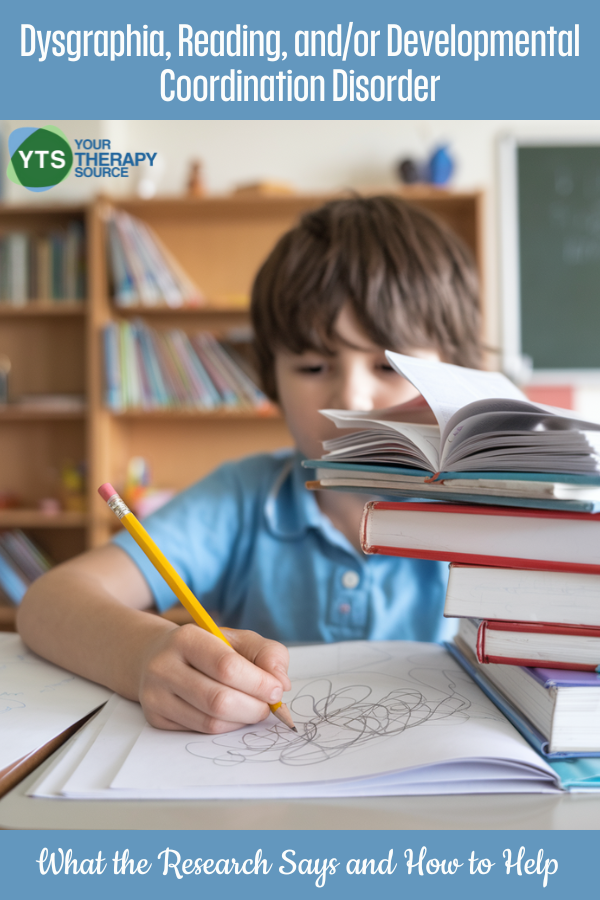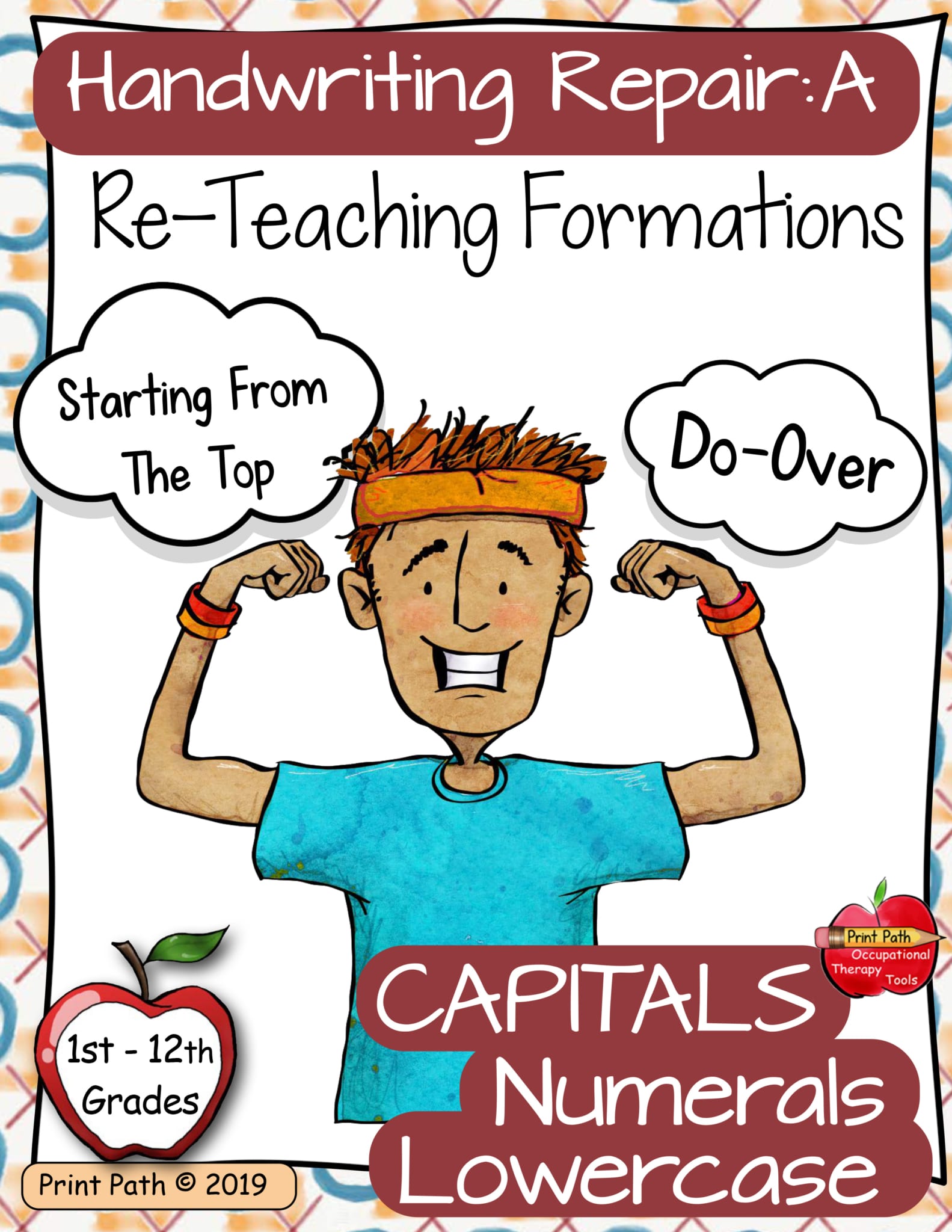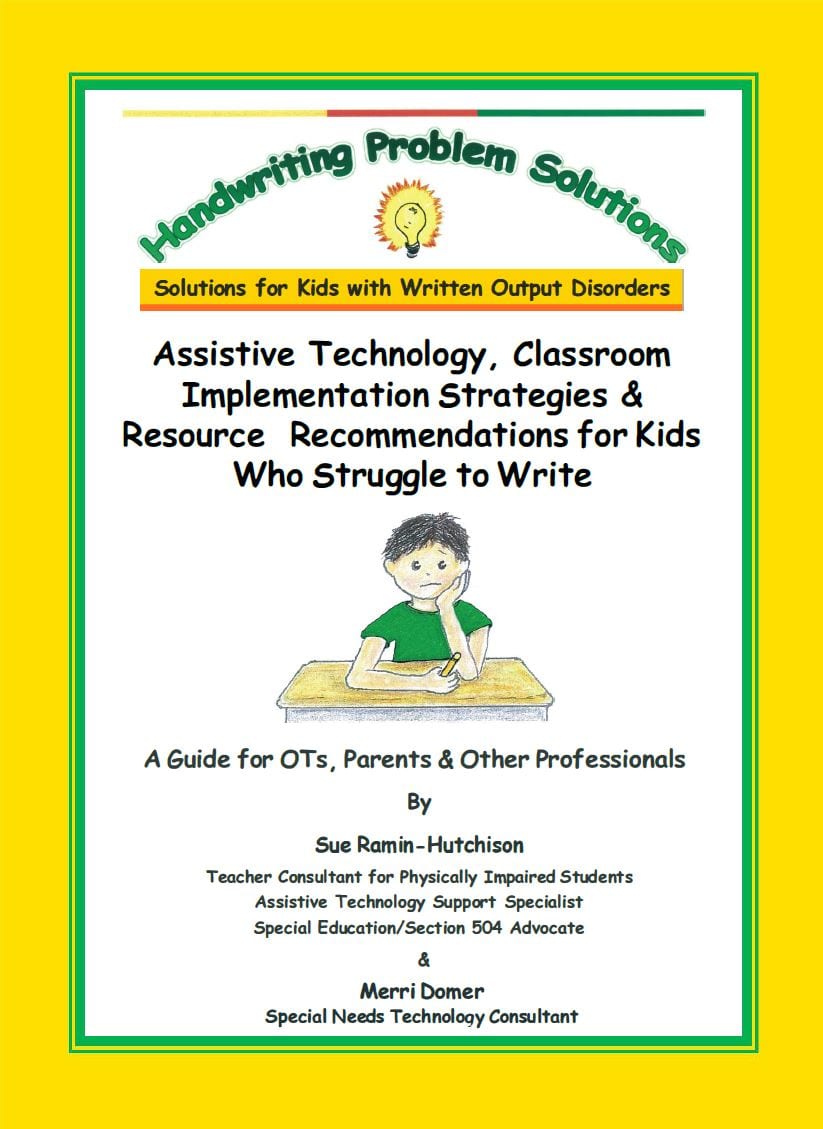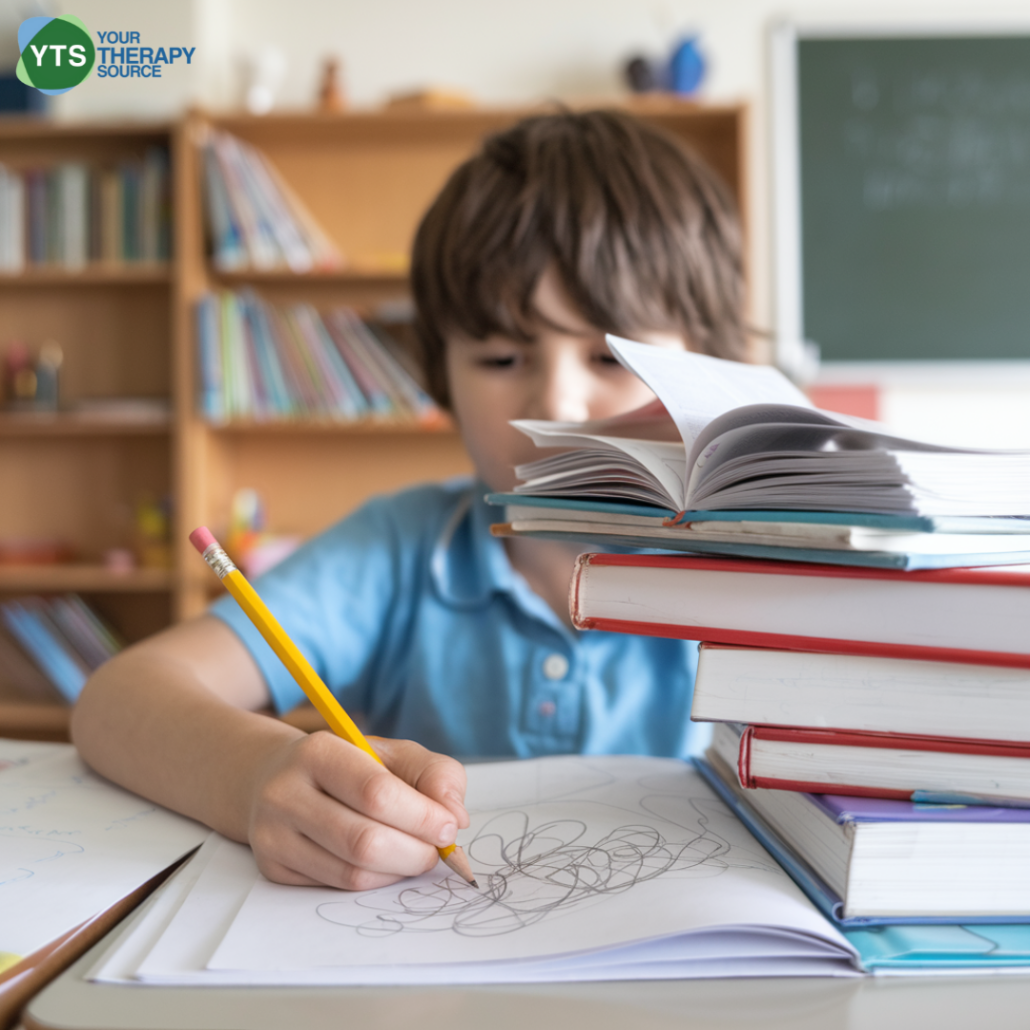Dysgraphia, Reading, or Developmental Coordination Disorder: What the Research Says and How to Help
Handwriting is an essential skill for academic success and self-expression. For children with dysgraphia, however, handwriting can be a source of frustration and struggle. Dysgraphia often coexists with other neurodevelopmental challenges, such as reading disorders or developmental coordination disorder. Understanding how these conditions impact handwriting is critical for providing effective support at school and home.

WHAT DOES THE RESEARCH SAY ABOUT DYSGRAPHIA, READING OR DEVELOPMENTAL COORDINATION?
Recent research by Jolly, Jover, and Danna (2024) sheds light on how dysgraphia affects children with reading disorders, developmental coordination disorder, or both. These findings emphasize the need for individualized approaches to assessing and supporting children with dysgraphia. The study highlights:
- Handwriting Quality and Speed:
- Children with developmental coordination disorder exhibit poorer handwriting quality, marked by irregular letter shapes, spacing issues, and poor legibility.
- Children with reading disorders demonstrate slower writing speeds, frequent pauses, and handwriting patterns resembling those of early learners.
- Children with both conditions face combined challenges in quality and speed.
- Distinct Neuromotor Impairments:
- The study confirms that handwriting difficulties arise from different underlying mechanisms depending on the child’s condition.

Dysgraphia Handwriting Intervention – Occupational Therapy Tools A: Formations
WHAT CAN WE LEARN FROM THE RESEARCH?
Comprehensive Assessments Are Key
Diagnosing handwriting difficulties requires evaluating both motor and reading skills to uncover the root causes. This comprehensive approach ensures that interventions target the child’s specific needs.
For example:
- Children with developmental coordination disorder benefit from strategies that address motor planning and spatial awareness.
- Children with reading disorders require interventions focusing on linguistic processing and writing fluency.
Understanding these differences helps educators and therapists develop tailored strategies for each child.
STRATEGIES TO HELP STUDENTS WITH DYSGRAPHIA
Multisensory Handwriting Practice
Engaging multiple senses during handwriting instruction enhances learning and retention. Activities that incorporate visual, auditory, and kinesthetic elements are particularly effective. Learn more about multisensory handwriting strategies.
Occupational Therapy Interventions
Occupational therapists play a crucial role in helping children with dysgraphia. Therapy can improve fine motor skills, hand strength, and visual-perceptual abilities, all of which are essential for effective handwriting. Discover how occupational therapy can help students with dysgraphia.
Accommodations and Modifications
Implementing classroom accommodations ensures students with dysgraphia can succeed academically. Examples include:
- Extra time for writing tasks.
- Allowing the use of word processors or speech-to-text tools.
- Offering alternative methods for demonstrating knowledge.
Check out practical dysgraphia accommodations.
Understanding Types and Symptoms
Recognizing different types of dysgraphia and their symptoms can inform more effective interventions. For example, spatial dysgraphia involves difficulties understanding spacing, leading to poorly formed letters. Explore more about dysgraphia types, symptoms, and how to help.

Assistive Technology, Classroom Implementation Strategies & Resource Recommendations for Kids Who Struggle to Write
Additional Targeted Strategies
For Children with Developmental Coordination Disorder
- Spatial Constraints:
- Use graph paper or lined paper with additional guides.
- Highlight starting points and margins for clarity.
- Fine Motor Skill Development:
- Engage children in activities like threading beads or using tweezers to strengthen hand coordination.
- Visual Feedback Tools:
- Incorporate apps or devices that provide real-time feedback on letter formation.
For Children with Reading Disorders
- Fluency Training:
- Practice timed writing exercises to gradually build speed.
- Use repetitive copying tasks for letter patterns.
- Multisensory Approaches:
- Write letters in sand or shaving cream to build motor-linguistic connections.
- Assistive Technology:
- Teach children to use typing or speech-to-text tools for longer assignments.
- For Children with Both Conditions
- Break Down Tasks:
- Divide assignments into smaller, manageable sections with regular breaks.
- Comprehensive Support:
- Collaborate with a team of occupational therapists, speech therapists, and educators to address motor and linguistic deficits simultaneously.
General Strategies for All Students with Dysgraphia
- Positive Reinforcement: Celebrate small achievements to build confidence.
- Alternative Assignments: Allow oral responses or project-based alternatives for written tasks.
- Extra Time: Provide extended time for assignments to reduce stress.
Dysgraphia affects children in unique ways depending on the presence of developmental coordination disorder, reading disorders, or both. Comprehensive assessments, targeted interventions, and supportive strategies can empower students to overcome these challenges and succeed academically.
By understanding and addressing the specific needs of each child, educators, therapists, and parents can help children with dysgraphia thrive in school and beyond.
REFERENCE
Jolly, C., Jover, M., & Danna, J. (2024). Dysgraphia Differs Between Children With Developmental Coordination Disorder and/or Reading Disorder. Journal of Learning Disabilities, 57(6), 397-410. https://doi.org/10.1177/00222194231223528



